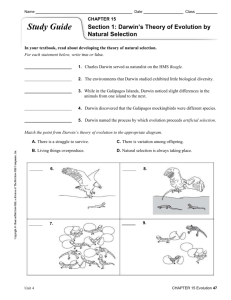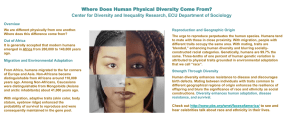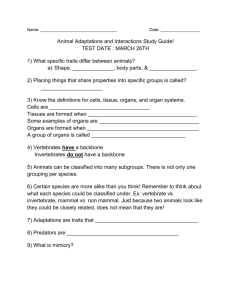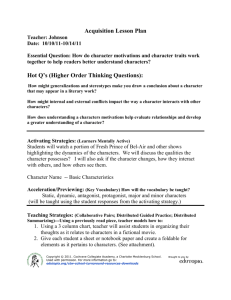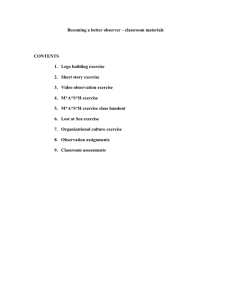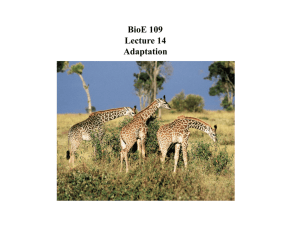Reading Guide
advertisement
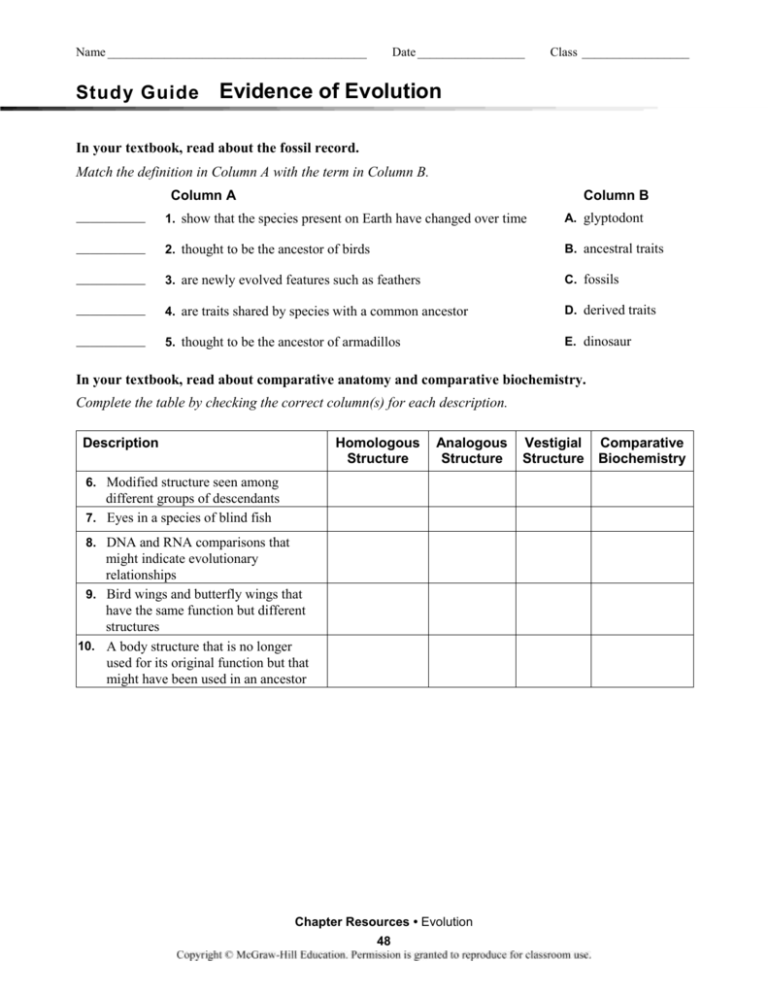
Name _________________________________________ Study Guide Date _________________ Class _________________ Evidence of Evolution In your textbook, read about the fossil record. Match the definition in Column A with the term in Column B. Column A Column B __________ 1. show that the species present on Earth have changed over time A. glyptodont __________ 2. thought to be the ancestor of birds B. ancestral traits __________ 3. are newly evolved features such as feathers C. fossils __________ 4. are traits shared by species with a common ancestor D. derived traits __________ 5. thought to be the ancestor of armadillos E. dinosaur In your textbook, read about comparative anatomy and comparative biochemistry. Complete the table by checking the correct column(s) for each description. Description Homologous Structure Analogous Structure 6. Modified structure seen among different groups of descendants 7. Eyes in a species of blind fish 8. DNA and RNA comparisons that might indicate evolutionary relationships 9. Bird wings and butterfly wings that have the same function but different structures 10. A body structure that is no longer used for its original function but that might have been used in an ancestor Chapter Resources • Evolution 48 Vestigial Structure Comparative Biochemistry Name _________________________________________ Date _________________ Class _________________ Study Guide, Introduction to Biology CONTINUED In your textbook, read about geographic distribution and types of adaptation. If the statement is true, write true. If the statement is false, replace the italicized term or phrase to make it true. 11. Evolutionary theory predicts that species respond to similar environments in similar ways. 12. Geographic distribution is the study of the distribution of plants and animals on Earth. 13. Similar environments can lead to the evolution of similar animals, even if they are not close relatives. 14. Traits that enable individuals to survive or reproduce better than individuals without those traits are called reproduction. 15. Mimicry involves a harmless species that has evolved to closely resemble a beneficial one. 16. The type of morphological adaptation shown in the picture above is camouflage. 17. Mimicry and camouflage are morphological adaptations that increase a species’ fitness. 18. Antibiotic resistance is a form of adaptation that causes some diseases to come back in more harmful forms. Chapter Resources • Evolution 49
